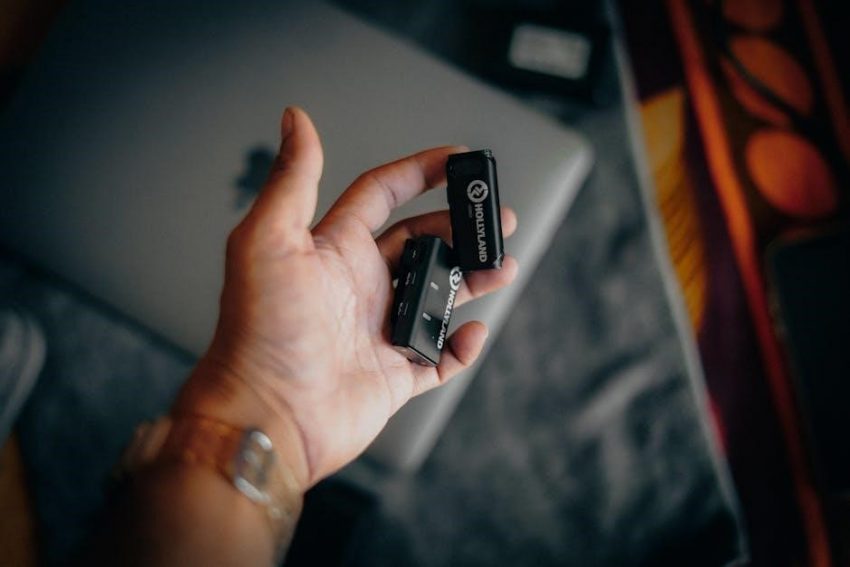Welcome to your digital voice recorder manual! This guide helps you understand your device’s features‚ including voice activation‚ FM radio‚ and file management‚ for optimal usage.
Understanding the Importance of a Digital Voice Recorder Manual
A digital voice recorder manual is essential for maximizing the device’s potential and ensuring safe‚ effective use. It provides detailed instructions for operating features like voice activation and FM radio mode‚ helping users navigate settings and functions seamlessly. The manual also offers troubleshooting tips for common issues‚ such as battery problems or file transfer errors‚ ensuring uninterrupted recording sessions. By reading the manual‚ users can avoid damaging the device or losing important recordings. It serves as a comprehensive guide‚ enabling users to explore advanced features and maintain their recorder in optimal condition. This resource is indispensable for both beginners and experienced users aiming to get the most out of their device.
Key Features of a Digital Voice Recorder
Digital voice recorders offer a range of innovative features designed to enhance recording and playback experiences. One notable feature is voice-activated recording‚ which automatically starts recording when sound is detected‚ saving storage space and time. Another key feature is the built-in FM radio mode‚ allowing users to listen to and record live broadcasts. Many models also support multiple recording formats‚ such as MP3 or WAV‚ ensuring high-quality audio. Additionally‚ USB connectivity enables easy file transfer to computers for storage or editing. Some devices also include repeat modes for looping playback and folder organization for managing files efficiently. These features make digital voice recorders versatile tools for both professional and personal use.
Setting Up Your Digital Voice Recorder
Before first use‚ read the manual carefully to ensure safe operation. Format the internal memory if required‚ install batteries‚ and test the recorder to confirm functionality and audio quality.
Preparing the Recorder for First Use
Before using your digital voice recorder‚ ensure it is properly prepared. Carefully unpack the device and install the batteries as instructed. Charge the recorder using the provided USB cable until the battery indicator shows a full charge. Format the internal memory if required‚ following the steps outlined in the manual. Test the recorder by recording a short audio clip to ensure it functions correctly. Familiarize yourself with the buttons and settings‚ such as recording modes and volume controls. Finally‚ refer to the manual for any specific setup instructions unique to your model to ensure optimal performance and functionality.
Connecting the Recorder to a Computer
To connect your digital voice recorder to a computer‚ use the provided USB cable. Plug one end into the recorder’s USB port and the other into your computer’s USB slot. The recorder will automatically enter USB mode‚ allowing your computer to recognize it as a removable storage device. Open the device folder to access recorded files‚ which are typically stored in the RECORD folder. You can drag and drop files to transfer them to your computer. Ensure the recorder is properly connected and the battery is charged to avoid data transfer interruptions. Always disconnect the device safely to prevent file corruption.

Recording and Playback Functionality
Digital voice recorders offer high-quality audio recording and easy playback. Use the REC button to start recording and STOP to end. Playback controls include PLAY‚ PAUSE‚ and VOLUME adjustment for clear audio review.
How to Record Audio
To start recording‚ press the REC button. The recorder will begin capturing audio immediately. For voice-activated recording‚ enable the Voice Operated function in settings. This mode automatically starts recording when sound exceeds a set threshold and pauses when noise drops below it. To customize your recording experience‚ navigate to the Record Settings menu by short-pressing the MODE key. Here‚ you can adjust the recording format‚ bitrate‚ and select from multiple folders to store your files. For FM radio recording‚ ensure the device is in FM Radio Mode and follow the same steps to capture your desired broadcast. Always test the recording function before important use to ensure optimal audio quality.
Playing Back Recorded Files
To play back recorded files‚ press the PLAY button. Use the UP or DOWN arrow keys to navigate through your recordings. Files are stored in folders‚ making it easy to organize and locate specific recordings. For hands-free listening‚ connect the recorder to your computer via USB and play files directly from the device. The REC button can be used to set repeat points‚ allowing you to loop specific segments of a recording. Adjust the volume using the UP or DOWN keys for optimal audio clarity. The LCD screen displays file information‚ such as duration and format‚ during playback. This feature ensures convenient access to your recorded content at any time.

Advanced Features of Digital Voice Recorders
Digital voice recorders offer advanced features like voice-activated recording‚ allowing hands-free operation‚ and FM radio mode for listening and recording live broadcasts. These features enhance convenience and functionality for versatile use.
Voice-Activated Recording
Voice-activated recording is a convenient feature that automatically starts and stops recording based on detected sound levels. This ensures you capture only the audio you need‚ reducing unnecessary silence. When enabled‚ the recorder senses ambient noise and begins recording once it reaches a set threshold. It pauses or stops when the sound drops below that level. This mode is ideal for lectures‚ meetings‚ or interviews‚ saving storage space and battery life. Always test the sensitivity settings beforehand to optimize performance for your environment. Refer to your manual to adjust these settings for the best results.
FM Radio Mode and Recording
The FM Radio Mode allows you to tune into your favorite radio stations directly on your digital voice recorder. To access this feature‚ press and hold the MODE button until “FM Radio” appears on the display. Use the navigation keys to adjust the frequency and find stations. Once tuned in‚ you can listen live or record the broadcast. The recorder will automatically switch to recording mode when in FM Radio. For optimal reception‚ use the built-in microphone or external headphones as an antenna. Recorded radio files are stored in a dedicated folder‚ making them easy to locate and playback later. This feature is perfect for capturing podcasts‚ music‚ or news broadcasts on the go.

File Management and Transfer
Your digital voice recorder organizes files in folders for easy access. Use the USB connection to transfer recordings to your computer for storage or sharing.
Organizing and Storing Files
Your digital voice recorder allows you to organize files efficiently. Recordings are stored in folders‚ with options to select specific folders before recording. This ensures easy access and categorization of your files; When using the FM radio mode‚ recordings are automatically stored in designated folders for quick retrieval. For optimal management‚ consider naming folders based on content or date. Regularly transferring files to your computer helps free up storage space and ensures your recordings are safely backed up. Always ensure the device is powered off before removing memory cards or batteries to prevent data loss during file management.
Downloading Files to a Computer
To transfer recordings from your digital voice recorder to a computer‚ use the provided USB cable. Connect the recorder to your computer‚ and it will appear as a removable storage device. Open the USB disk folder and navigate to the recorded files. Select the desired files and drag them to your computer’s storage location. Ensure the recorder is in USB mode during the transfer. If prompted‚ install any necessary drivers or firmware updates. Always safely eject the device from your computer to prevent data loss. This process allows you to backup and manage your recordings efficiently‚ freeing up space on your recorder for new files.

Troubleshooting Common Issues
Common issues include low battery warnings‚ file corruption‚ or connection problems. Check power sources‚ ensure proper USB connections‚ and reset the device if necessary for smooth operation.
Resolving Battery and Power Issues
Ensure your digital voice recorder is powered off before replacing batteries to avoid file damage. Always use the recommended battery type and avoid removing batteries during recording or file transfers. If the device fails to turn on‚ check the battery connections and ensure they are properly seated. Charge the recorder using the provided USB cable and original charger to prevent power issues. Avoid overcharging‚ as it may reduce battery life. If problems persist‚ reset the device by pressing and holding the power button for 10 seconds. Refer to the manual for specific troubleshooting steps to address battery-related errors effectively.
Fixing File Transfer Problems
If you encounter issues transferring files from your digital voice recorder‚ ensure the USB connection is secure and the LED indicator is flashing‚ indicating data transfer is in progress. Use the original USB cable provided with the device to avoid compatibility issues. If files fail to transfer‚ restart both the recorder and your computer‚ then reconnect the device. Check that the recorder is properly recognized by your computer and that the correct USB mode is selected. If problems persist‚ reinstall the device drivers or consult the manual for specific troubleshooting steps to resolve file transfer errors effectively and ensure your recordings are safely transferred.

